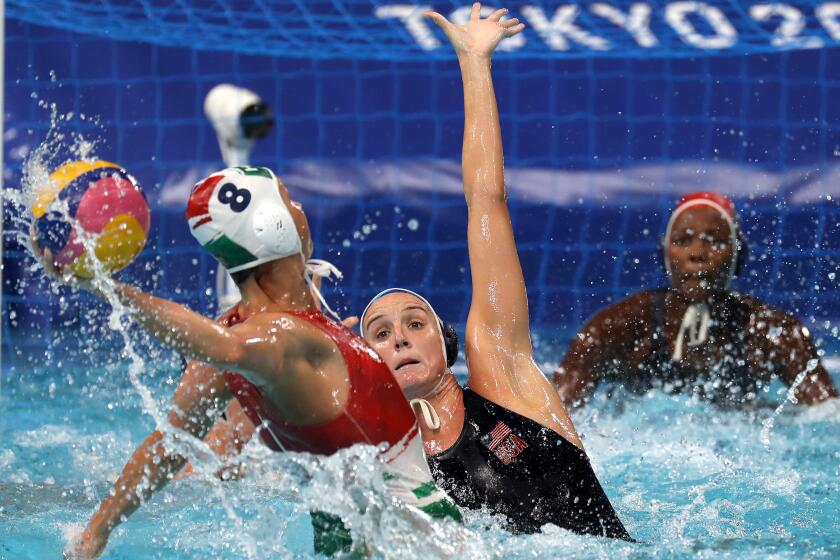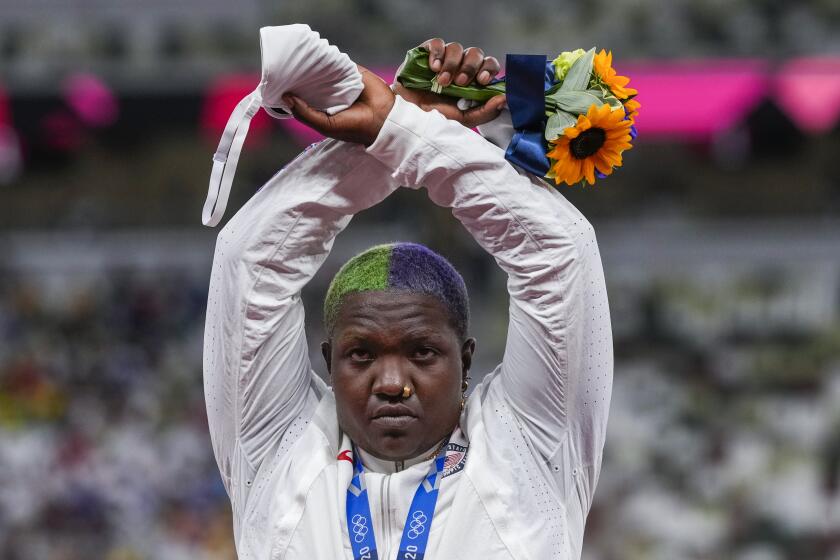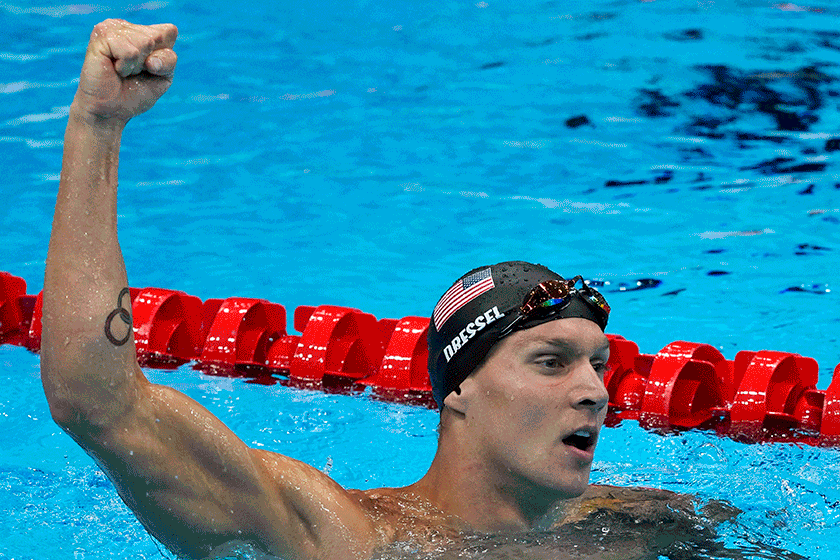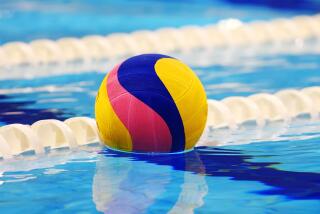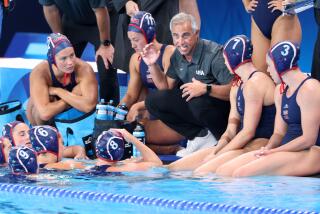Water polo is a mix-match gumbo of sports with some ‘brutality’ on the side
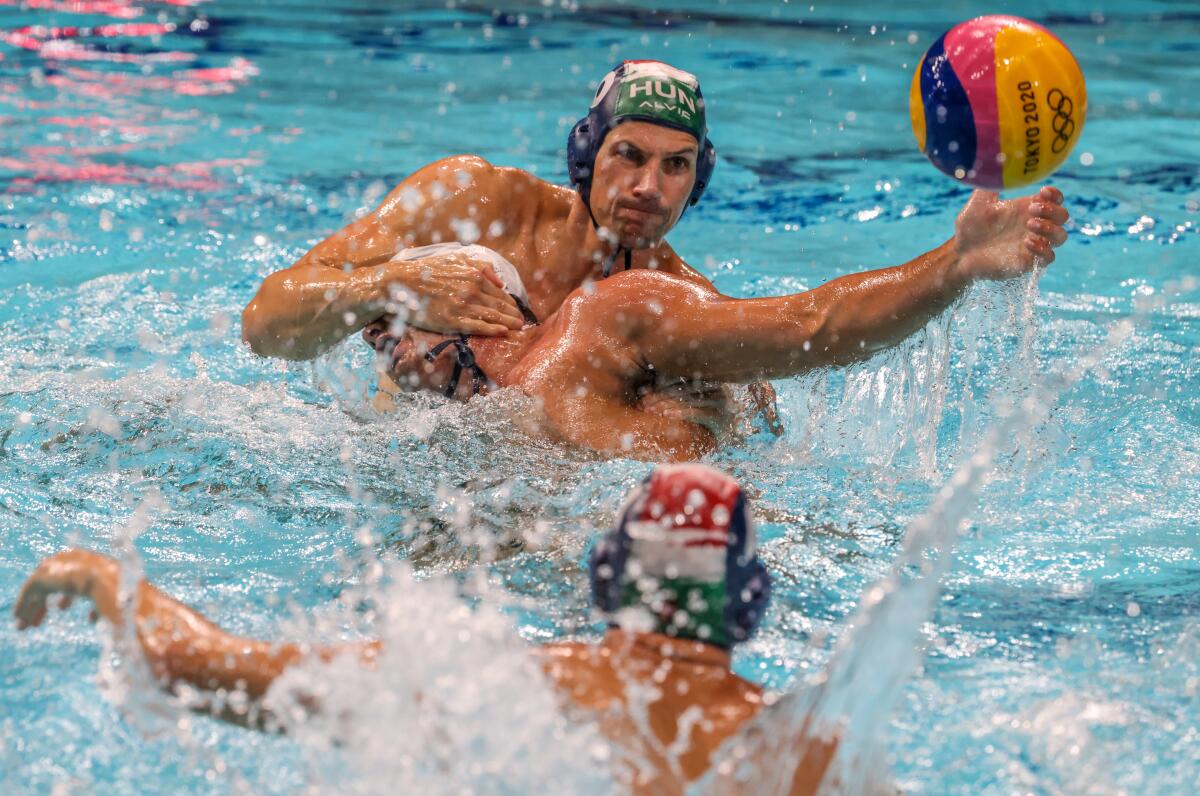
- Share via
TOKYO — The whistle blows and the athletes move through the pool in unison, beautifully efficient strokes moving the water, kicking up a foamy, bubbly wake. They look the same. They move the same. But this is not synchronized swimming.
This is water polo, and the athletes are about to nearly drown or punch someone in the face.
Part basketball, part hockey, part soccer, part MMA, the Olympics’ most physically demanding sport happens in a pool right down the road from where Katie Ledecky and Caeleb Dressel get most of the love.
The U.S. women’s water polo team, the two-time defending Olympic champions, fell to Hungary 10-9 in pool play on Wednesday in Tokyo.
Everywhere at the venue there are reminders that what you are watching is hardly the swimming you might be used to. It’s almost comical that the international governing body, FINA, views it in the same category as swimming, diving and artistic swimming. Water polo, officials say, is kind of like the family member you’d want to party with.
“The athletes who play water polo are polar opposite compared to swimmers,” U.S. men’s national team member Ben Hallock said. “…You know, we all hate swimming. It’s the worst part of practice.”
In the Tatsumi Water Polo Centre, the stars either have black eyes or red scratches running from their necks down their arms. It’s a sport that can be so brutal that its most severe infraction is simply called “brutality.” The word appears 35 times in the sport’s officiating manual. The word “swimming” is in the handbook only 16 times.
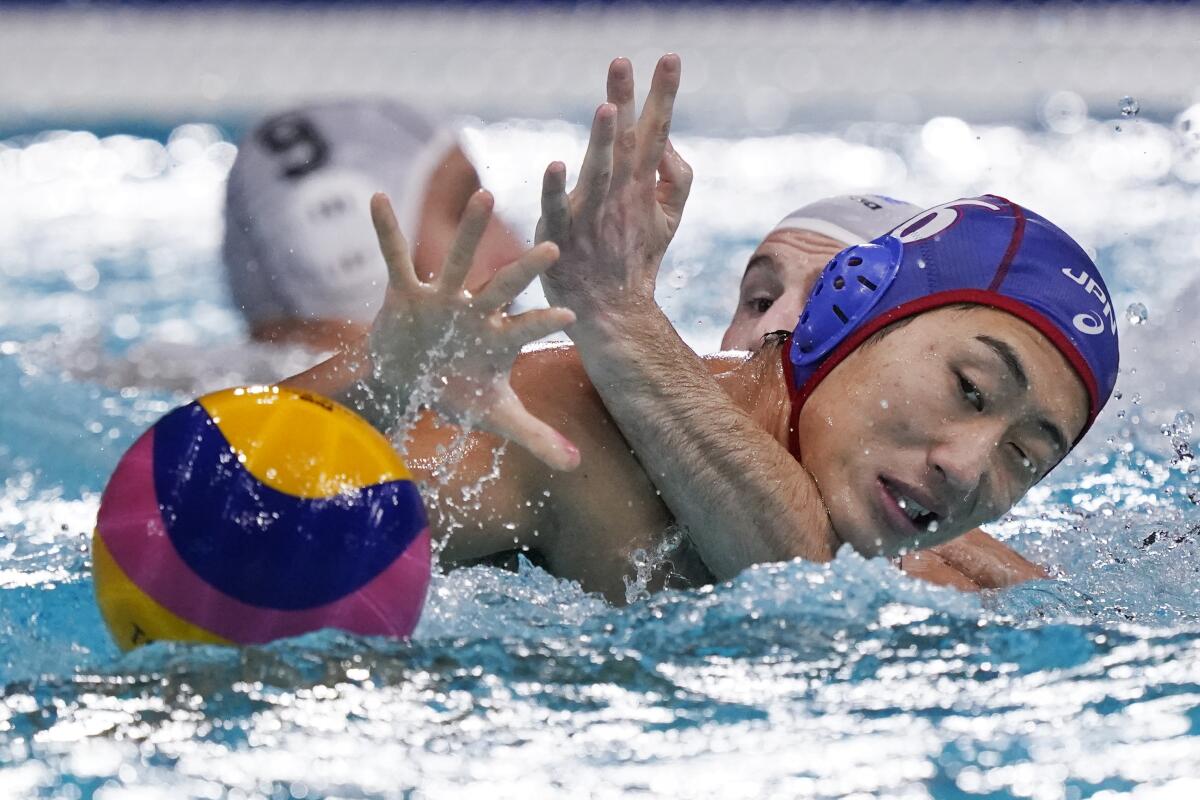
If that sounds like “Mortal Kombat,” water polo can kind of look like it, especially in front of the goal, where a center forward tries to make space by posting up. The defender, with merely minor limitations, is allowed to jump on the person and keep them from getting the ball.
This isn’t an exaggeration — the most famous water polo match ever is nicknamed “Blood in the Water.” But there’s more to the sport than brute force. It’s also kind of a gumbo made of all sorts of familiar sports.
“I did swimming, I did basketball, I did soccer, I did gymnastics, I did dance,” said U.S. player Maggie Steffens. “And water polo was the one that kind of tied all the sports I really loved into one. It has the mental game, the emotional game, the physical game, the endurance. It’s a team sport, which is the only sport I could probably ever do. So that’s really the draw to me, that it kind of took all the aspects of different sports and put it into one.”
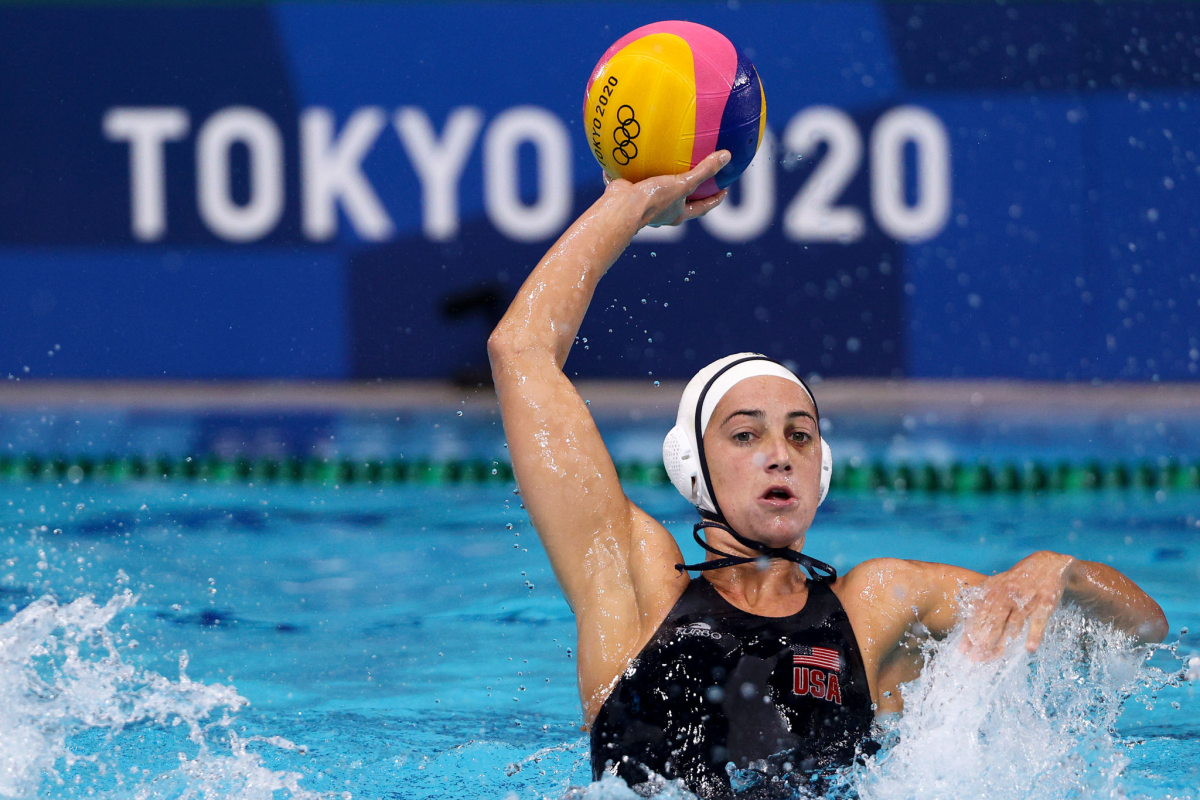
Steffens is regarded as the best woman currently playing the sport, and Friday, she became the Olympics’ all-time leading scorer. Two matches earlier against China, Steffens caught an elbow to the face, her nose dripping blood into the pool.
She missed no matches.
On Friday, Steffens played with bruising under her left nostril and a cut still visible on the bridge of her nose. She also had some fresh scratches on her chest.
“It’s beautiful,” she said with a laugh. “No matter if it’s broken, [my] spirit is alive.”
There are penalties that can get you thrown out in nearly every venue. Sometimes, they sound mundane. An “unsportsmanlike” foul can get you tossed in basketball. A red card sends you off in soccer. And in judo, there’s a category of misdeeds called “grave infringements.”
U.S. shot putter Raven Saunders gave the Tokyo Olympics a moment to remember with a celebration of redemption, of perseverance, of duality.
But “brutality”? That’s probably the most cinematic. It rarely happens and probably won’t with the stakes this high. But in the water and underneath the surface? Be prepared to be bruised.
“I got punched twice today,” U.S. men’s player Luca Cupido said after a close loss to Italy. “… It can be anything, a knee to your lower back a punch to your ribs, anything. That’s why you have to play with your head up.”
If you looked down, though, you’d see all the real crazy stuff — the tugging and pushing and punching that happens underwater while players jostle for the tiniest positional advantages.
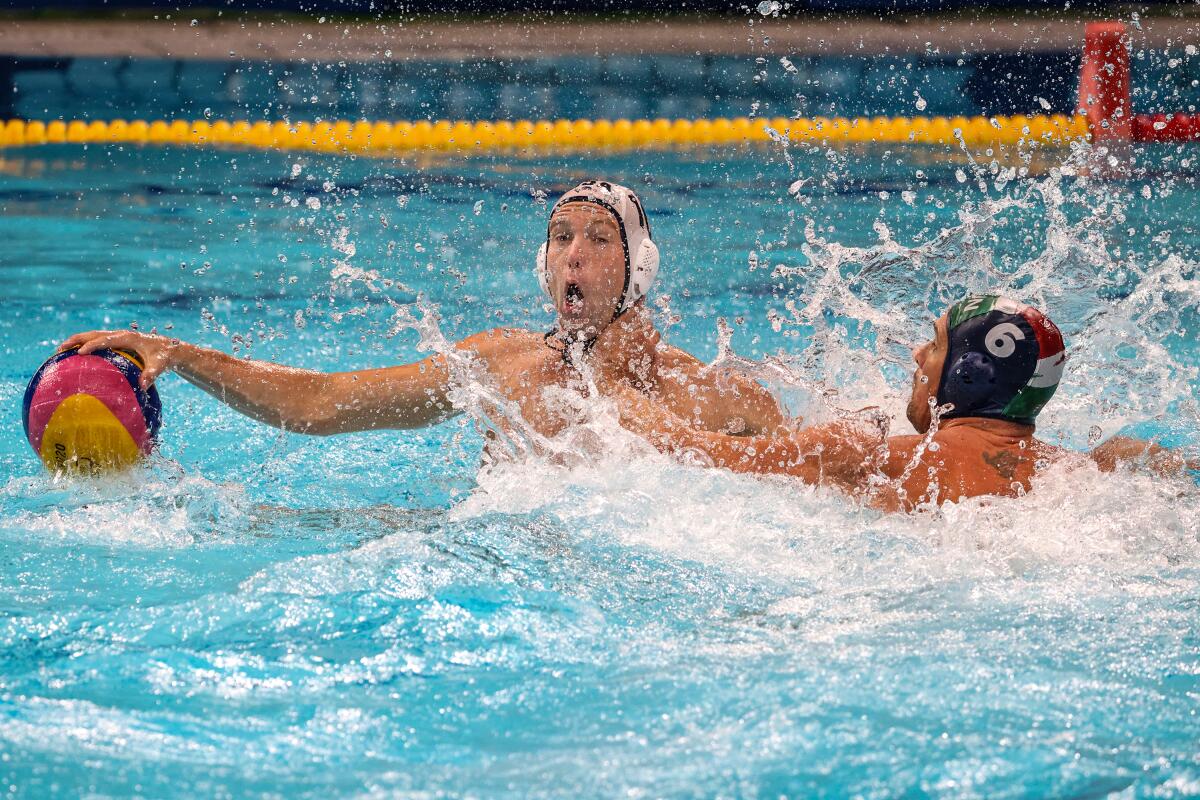
“It’s like playing basketball if there were no refs and guys can hang on you and you’re trying to breathe underwater,” U.S. men’s center forward Alex Obert said.
There’s some pushback from players if you focus merely on the violence and ignore the grace, efficiency, precision, endurance and strategy that ultimately decides whether a team is elite in ways that an underwater kidney punch can’t.
“I think it’s a lot of skill, to be honest,” said Aria Fischer, a center forward on the women’s team. “And I think people want to focus on the brutal aspect of it and the fighting of it. But at the end of the day, it’s a very skillful sport. And I think that there’s a lot more stuff going on than just the physical play. That’s just kind of a side piece to it.”
But it’s a major piece, especially to water polo newbies who usually have the same reaction.
On the final day of swimming, Caeleb Dressel wins golds in the 50-meter freestyle and the 4x100 medley relay to cap off an impressive Olympic performance.
“Most people at first just go, ‘Oh, my goodness. I’d be drowning. How did you not drown in there?’” Hallock said.
To survive the brutality requires not committing brutalities, keeping cool when you get punched and not reacting to the sport’s most identifiable quality.
“A lot of people are attracted to that physicality, always wondering what’s happening under the water. And I think that’s a huge connection piece,” U.S. women’s driver Maddie Musselman said. “You know, there’s a lot of grabbing, there’s a lot of kicking and punching, but to be able to play through that, I think a lot of people admire that.”
More to Read
Go beyond the scoreboard
Get the latest on L.A.'s teams in the daily Sports Report newsletter.
You may occasionally receive promotional content from the Los Angeles Times.

